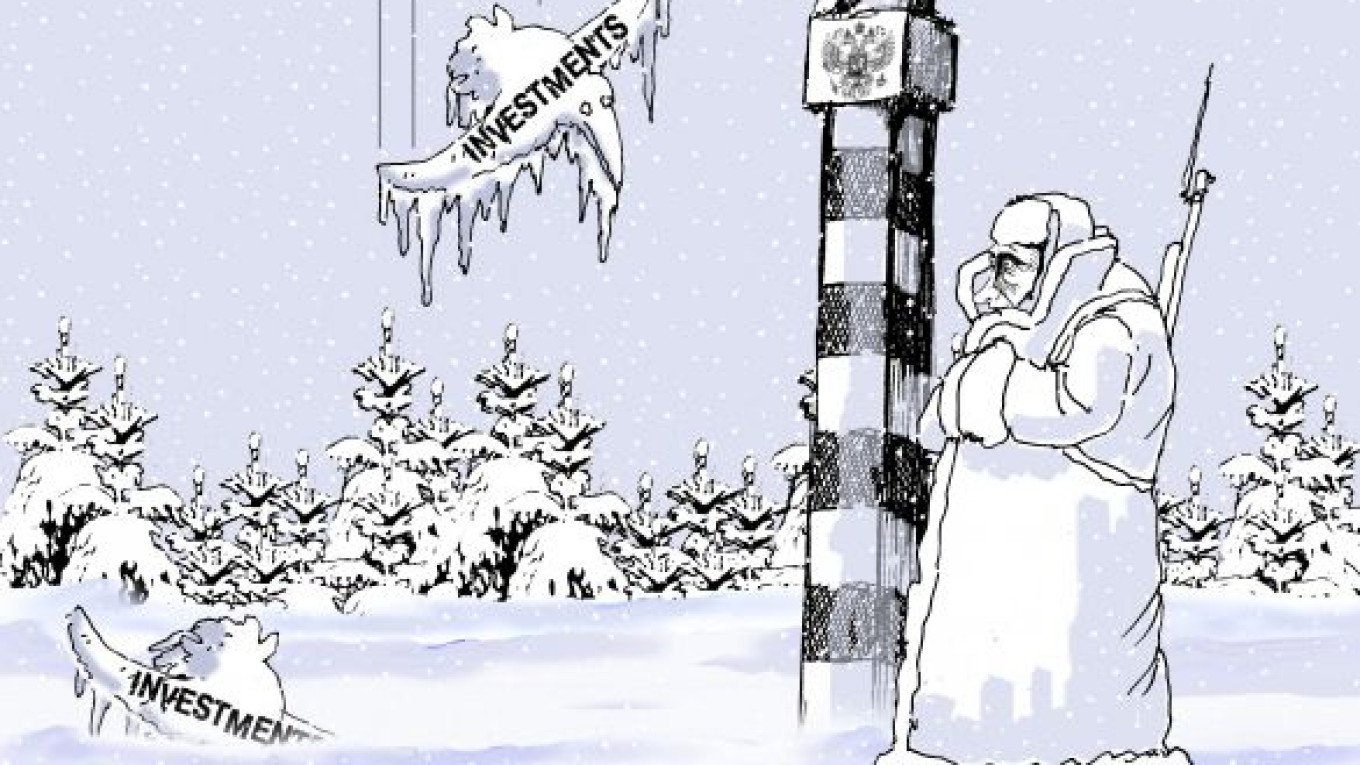President Dmitry Medvedev publicly acknowledged last week what everyone has known for two decades: The investment climate in Russia is bad. While the measures Medvedev proposed to improve the investment climate are generally sound, there are several reasons why they won’t work.
In 2010, fixed capital investment in Russia totaled 8.35 trillion rubles in constant 2008 prices ($310 billion), the same as it was in 2007. In China, however, investment in 2010 was 14.4 trillion yuan ($2.16 trillion). One of the main reasons China’s investment level is so high is its high domestic savings. But the higher the level of savings, the lower the level of consumption.
In Russia — a country where conspicuous consumption has become the idee fixe of the elite and prosperity the slogan of the middle class — few are interested in saving money. Gross savings in China equal 48 percent of the GDP, whereas in Russia they are only 21 percent.
The message Medvedev should be sending is: If you want investment, you must be thrifty. But in an election year, “Tighten Your Belts!” is probably not at the top of his list for campaign slogans.
Who is investing in Russia, and how do they compare with the investors in other similar countries with developing economies? In China, the state provided just 15 percent of total investment last year, with domestic investors contributing 82 percent. In Russia, those figures are 37 percent and 58 percent, respectively.
But state and private investment differ sharply in effectiveness. Consider the cellular communications sector. From 2004 to 2010, Mobile TeleSystems increased core business investment by 120 percent, while its subscriber base grew by 200 percent over the same period. During the same years, investment in Gazprom increased 3.2 times while its gas extraction dropped 6.7 percent.
Now we have Prime Minister Vladimir Putin and Medvedev trying to outdo each other in promising state allocations for domestic airplane and automobile production, roads and railways through 2020. But 10 years from now, we will look back and most likely see that no radical improvements were made in any of these sectors.
If we shift our focus down one level, we see another problem. Primary processing industries — the core sector of Russia’s economy — stopped building new factories a long time ago. This was done because the current facilities were sold to their owners for pennies on the dollar, and their value was cashed into their final products. Those wanting to build new plants will have to survive a fierce competition with oligarchs who got their assets for next to nothing, and new investors’ chances of winning this contest are practically zero. That is why investment always goes to start-up businesses: wholesale and retail ventures, the food industry, banking and cell-phone communications. The privatization of the 1990s remains the most powerful obstacle to increasing direct investment in the basic sectors of the economy. Offering tax breaks to selected sectors would help, but such preferences are primarily given to oil companies.
These problems stem not only from the infamous “wild 1990s.” The so-called stable 2000s are also to blame. This decade was far from stable for investment, particularly if you look at the rules of doing business. Since the Tax Code was first adopted, the government makes new amendments to the code about every three weeks. When new agencies are created, they hold entire sectors hostage. The latest example was the redistribution of assets in the alcohol industry after the Federal Alcohol Market Regulatory Service was created in 2008. This redistribution has nothing to do with state-sponsored raids of private assets or large corruption schemes. The scheme is so “effective” precisely because it is so official, legal on paper and carried out in the name of lofty goals.
The stock market is another factor limiting investment in the country. In spring 2008, Gazprom was valued at 27.8 percent of Russia’s GDP, while General Electric represented just 2.9 percent of U.S. GDP by comparison.
Although stock markets were created to channel money into production, Russia’s is an exception to the rule. Foreign investors tend to compare the dynamics of the stock market with the real return on capital to make speculative investments more confidently. China did not even have a stock market as such prior to 2000, and yet it managed to accumulate $436 billion in direct foreign investment by 2002.
Changing Russia’s harsh investment climate is tantamount to trying to change the country’s equally harsh weather. Even if the country somehow succeeds in eliminating corruption, it would be like eradicating the Siberian mosquito without touching the severe Siberian winter.
Vladislav Inozemtsev is a professor of economics, director of the Moscow-based Center for Post-Industrial Studies and editor-in-chief of Svobodnaya Mysl.
A Message from The Moscow Times:
Dear readers,
We are facing unprecedented challenges. Russia's Prosecutor General's Office has designated The Moscow Times as an "undesirable" organization, criminalizing our work and putting our staff at risk of prosecution. This follows our earlier unjust labeling as a "foreign agent."
These actions are direct attempts to silence independent journalism in Russia. The authorities claim our work "discredits the decisions of the Russian leadership." We see things differently: we strive to provide accurate, unbiased reporting on Russia.
We, the journalists of The Moscow Times, refuse to be silenced. But to continue our work, we need your help.
Your support, no matter how small, makes a world of difference. If you can, please support us monthly starting from just $2. It's quick to set up, and every contribution makes a significant impact.
By supporting The Moscow Times, you're defending open, independent journalism in the face of repression. Thank you for standing with us.
Remind me later.


